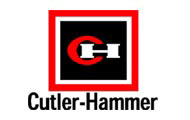Terms & Definitions
We’ve listed some common HVAC industry terms and their definitions below. If you don’t see what you’re looking for or need more information, contact us.
AFUE (Annual Fuel Utilization Efficiency) — A measure of a gas furnace’s efficiency in converting fuel to energy. The higher the rating, the more efficient the unit. For example: A rating of 90 means that approximately 90 percent of the fuel is used to provide warmth to your home, while the remaining 10 percent escapes as exhaust.
BTU (British Thermal Unit) — The heat necessary to raise the temperature of 1 pound of water 1 degree Fahrenheit. In your home, BTUs measure 1) the heat given off when fuel is burned for heating, and 2) the heat that is extracted from your home during cooling.
CFM (Cubic Feet per Minute) — A standard measurement of airflow. A typical HVAC system requires 400 CFM per ton of air conditioning.
Capacity — The output or producing ability of a piece of cooling or heating equipment. Cooling and heating capacities are measured in BTUs.
Compressor — The heart of an air conditioning or heat pump system. Located outside, the compressor pumps refrigerant into the home in order to meet the cooling requirements of the system.
Condenser Coil or Outdoor Coil — In an air conditioner, the coil dissipates heat from the refrigerant, changing the refrigerant from vapor to liquid. In a heat pump system, it absorbs heat from the outside air.
Damper — Found in ductwork, the damper is a movable plate that opens and closes to control airflow. Dampers can be used to balance airflow in a duct system. They are also used in zoning to regulate airflow to certain rooms.
Ductwork — Pipes or channels that carry air throughout your home. In a home comfort system, ductwork is critical to performance — as critical as the equipment itself, in fact.
Evaporator Coil or Indoor Coil — Located inside your home in the indoor unit, this is where the refrigerant evaporates as it absorbs heat from the air that passes over the coil. Along with the condenser coil, it forms the 2 halves of your air conditioning system.
Gas Furnace Heat Exchanger — Located in the furnace, the heat exchanger transfers heat to the surrounding air, which is then pumped throughout your home.
HVAC (Heating, Ventilation and Air Conditioning) — The general industry term encompassing a variety of home comfort equipment, including air conditioners, furnaces, thermostats, filters, ductwork and filters.
HSPF (Heating Seasonal Performance Factor) — This rating is used in measuring the heating efficiency of a heat pump. The higher the number, the more efficient the unit.
Package Unit — A heating and cooling system contained in one outdoor unit. A package unit is typically installed either beside or on top of the home, or sometimes in the attic.
Refrigerant — A chemical that produces a refrigerating effect while expanding and vaporizing. Most residential air conditioning systems contain R-22 refrigerant. R-22 is regulated by international controls under the Montreal Protocol and in the United States by the Environmental Protection Agency. It is scheduled to be in production until the year 2020. It’s used in approximately 95% of air conditioning equipment manufactured in the U.S. today.
R410A – This is also a refrigerant chemical. This is the refrigerant that is replacing the R-22. It is not an ozone-repleting refrigerant, therefore is more environmentally friendly. However, it is a greenhouse gas and should not be released into the air. It is also a more efficient refrigerant resulting in cost-savings to the customer.
SEER (Seasonal Energy Efficiency Ratio) — Similar to a car’s miles per gallon measure of fuel efficiency, the SEER is a measure of cooling efficiency for air conditioners and heat pumps. The higher the SEER, the more energy efficient the unit. The government’s minimum SEER rating is 10.
Split System — The combination of an outdoor unit (air conditioner or heat pump) with an indoor unit (furnace or air handler). Split systems must be matched for optimum efficiency.
Thermostat — A thermostat consists of a series of sensors and relays that monitor and automatically control the functions of a heating and cooling system.
Ton — A unit of measurement used for determining cooling capacity. One ton is the equivalent of 12,000 BTUs per hour.
Zoning — A method of dividing a home into different comfort zones so each zone can be independently controlled depending on use and need.










